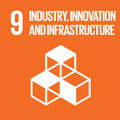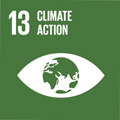- Docente: Joerg Schweizer
- Credits: 9
- SSD: ICAR/05
- Language: English
- Moduli: Joerg Schweizer (Modulo 1) Claudio Lantieri (Modulo 2)
- Teaching Mode: In-person learning (entirely or partially) (Modulo 1); In-person learning (entirely or partially) (Modulo 2)
- Campus: Bologna
-
Corso:
Second cycle degree programme (LM) in
Civil Engineering (cod. 8895)
Also valid for Second cycle degree programme (LM) in Civil Engineering (cod. 0930)
Learning outcomes
The course is split in two modules, wheras the “Sustainable Transportation Engineering” module covers transport modelling and planning, while the “Urban road mobility design and maintenance” module focuses on the design of infrastructure necessary to improve the sustainability of transport. The main goals of this course is explain the theoretical foundations of methods that are necessary to understand, apply and evaluate the various scientific and technological approaches which potentially improve the sustainability of transportation. It presents examples of the aforementioned approaches such as infrastructure planning in favor of sustainable modes, alternative fuels and propulsion methods, innovative transport systems, and various taxation schemes to include external costs and attempts to change awareness. A main purpose is to make students capable to analyzing critically the potential of new approaches to sustainable transportation, rather than to give a complete coverage of all known methods proposed to date. Furthermore, the course intends to provide notions on the main tools used for a correct planning and planning of interventions on sustainable mobility in the urban environment. Finally, it intends to provide the fundamentals of road infrastructure management and the main maintenance techniques. The course will provide the bases of sustainable transportation systems and will also be an excellent starting point for students who intend to continue their studies in Civil Engineering in the “Sustainable mobility in urban areas” curriculum.
Course contents
Sustainable Transportation Engineering (STE) module
The specific learning goals shall be achieved by following this programme:
1. Overview: What is sustainable transportation engineering and why it is needed?
2. Vehicles: physics of vehicle movement, speed profiles, energy consumption and vehicles flows.
3. Transport networks: basic definition of a transport graph, different link cost models, zoning and how to interact with transport demand
4. Microscopic transport models: introduction to an advanced traffic simulation software (SUMOPy) which allows to simulate individual vehicles and persons; this models allow to analyze present or any future transport modes to a greate detail. Microscopic networks and vehicle models are defined, demand is generated and an urban traffic scenario is simulated and evaluated.
5. Classical transport demand models: Macroscopic, flow-oriented, transport demand models, based on the 4 stage demand estimation model, which includes (1) trip generation models, (2) trip distribution models, (3) modal split models and (4) route choice-models; different traffic assignment methods for un-congested and congested networks are presented.
6. Transport impact analysis: simple models of environmental impacts (pollutants, noise, space), analysis of economical impacts (internal/external costs, Cost Benefit Analysis) and social impacts (accessibility, accidents).
7. Performance analysis of future transport technologies: electrification and automation are two technology drivers which will change the performance of private and public transport in terms of energy consumption, ride comfort, personal safety and personal health.
8. Sustainable transport planning: practical procedures for planning on city-level (transport scenario building and evaluation), local-level (local networks,inter-modal hubs, traffic reduction, car-free area, shared-space) and street-level (measures in favor of active modes).
9. Case studies: New towns like Copenhagen (Denmark),Barcelona (Spain), Vauban (Freiburg, Germany) or Masdar city (Abu Dhabi, UEA) have achieved an extraordinary high level of sustainability and quality of life. Which were the methods that have been used?
Urban road mobility design and maintenance (URMDM) module:
The main topics of the course are reported below:
-
Course introduction.
-
The Concept of Sustainable Urban Mobility Plans
-
Traffic calmming techniques
-
Cycling path planning and design
-
Design of urban intermodal nodes
-
Infrastructure system for vulnerable road users
-
Historical Pavement
-
Network safety management and Road Safety Ispection
-
Road Pavement design
-
Environmental sustainability in Road Pavements
-
Road pavement quality control
-
Road Maintenance
Readings/Bibliography
Sustainable Transportation Engineering (STE) module:
- E. Cascetta. Transportation systems engineering: theory and methods. Kluwer Academic Publisher, Boston/Dordrecht/London, 2001. (Italian version available).
- WHO.Particulate matter, ozone and nitrogen dioxide. Technical report, World Health Organization, Bonn, Germany,2003. www.euro.who.int/document/e79097.pdf.
- L.C. Den Boer and A. Schroten. Traffic noise reduction in europe: Health effects, social costs and technical and policy options to reduce road and rail traffic noise. Technical report, CE Delft, the Netherlands, 2007. http://www.thepep.org/ClearingHouse/docfiles/Traffic.Noise.Reduction.in.Europe.pdf.
Urban road mobility design and maintenance (URMDM) module:
-
European Platform on Sustainable Urban Mobility Plans. Guidelines for developing and implementing a sustainable urban mobility plan. 2019
-
International Transport Forum. Monitoring Progres in Urban Road Safety. 2020
-
Emilia Romagna Region. Guidelines for the regional cycling system (Law no. 10/2017) in coordination with the Integrated Life Project Prepair
-
Directive 2008/96/EC of the European Parliament and of the Council of 19 November 2008 on Road Infrastructure Safety Management
-
Directive 2004/54/EC f the European Parliament and of the Council of 29 April 2004 on minimum safety requirements for tunnels in the Trans-European Road Network.
Teaching methods
Sustainable Transportation Engineering (STE) module
1. Lecture, 3h per week.
2. Exercises, 1h per week.
3. Extensive lecture notes which are made available on-line.
4. Various videos with tutorials on the sofware
5. One planning exercise as group work to put the acquired theory into practice. During this exercise students will model the traffic of a small urban area using the SUMOPy micro-simulator.
Urban road mobility design and maintenance (URMDM) module:
Class notes.
Assessment methods
Sustainable Transport System Design
The total points of the integrated course Sustainable Transport System Design is composed of 2/3 of the mark from the STE module and 1/3 of the mark from the URMDM module. A minimum mark of 18 is required in both modules.
Sustainable Transportation Engineering (STE) module
1. The planning exercise (6p)
2. Written exam (24p):
- 3 problems to be answered in 2 hours.
- The first problem is a collection of questions to be answered as multiple choice or a short phrase, covering the material of the entire course;
- The remaining two problems will be calculations, covering the subjects of the exercises.
- Allowed is a non-programmable pocket calculator and one sheet with hand-written notes
Urban road mobility design and maintenance (URMDM) module:
The exam consists of a written test consisting of 3 parts on the contents explained in class:
-
Multiple choice questions
-
Open question
-
Exercise
Teaching tools
Sustainable Transportation Engineering (STE) module
Extensive lecture notes and video tutorials which are made available on-line. A PC or laptop is recommended for some exercises and to elaborate and document the planning exercise. During the planning exercise, at least one student in the group needs to install and run SUMOPy.
Urban road mobility design and maintenance (URMDM) module:
A notebook is recommended for downloading and viewing lecture notes and possibly perform simulations.
Office hours
See the website of Joerg Schweizer
See the website of Claudio Lantieri
SDGs




This teaching activity contributes to the achievement of the Sustainable Development Goals of the UN 2030 Agenda.
